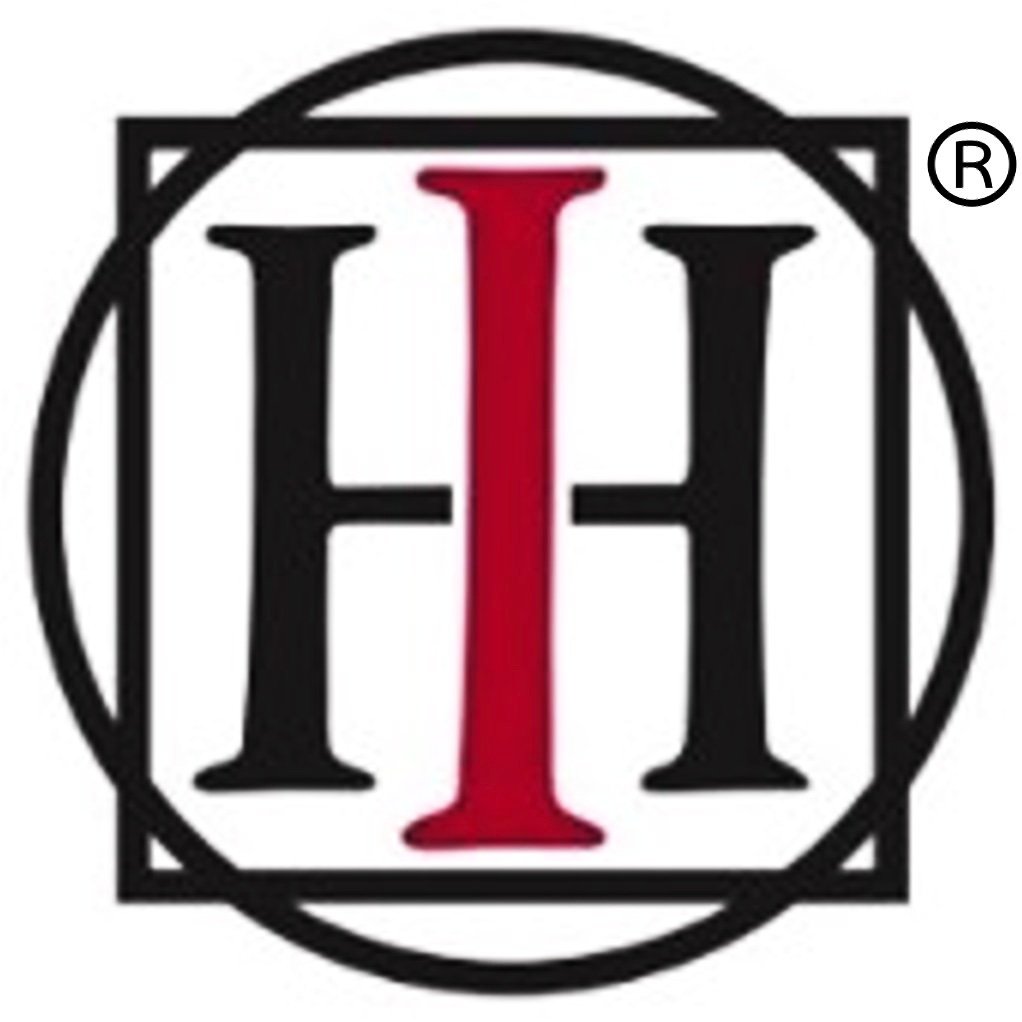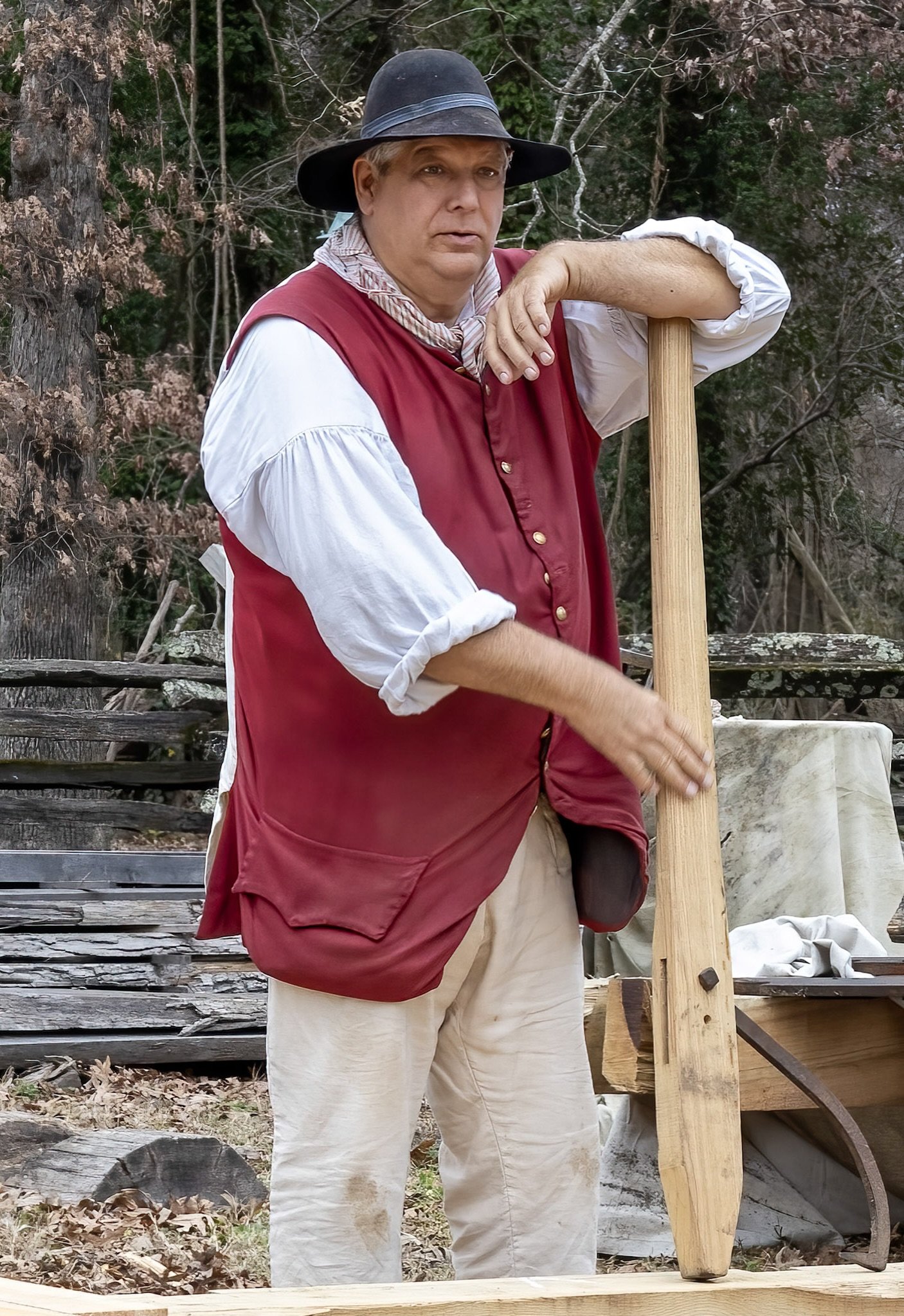Master Carpenter Garland Wood with his hands on the Virginia House hearth post, days before his retirement after forty years at Colonial Williamsburg.
On Friday last week at 4:30 o’clock, Garland Wood retired from forty years in the Historic Carpentry Trade at Colonial Williamsburg. The day had been coming for a long time. Still, it overtook us all with a sense of interrupted progress—of our project, of the trade, of local history. It was the end of an age.
At the 24th Annual Working Wood Conference the weekend before, Garland’s career through the decades had been chronicled and celebrated. He was introduced by his former journeyman, Ted Boscana, now Director of Historic Trades at Colonial Williamsburg. He was interviewed by Master Cabinetmaker, Bill Pavlak. He was congratulated in comic rhyme by his mentor of old, Roy Underhill of PBS television fame.
Garland Wood addressing the 2022 CW Working Wood Conference
There was a trades banquet and a masters luncheon. There were gifts of a handwoven blanket from the weaver, a hand-forged axe from the blacksmith, a hand-hammered silver cup from the silversmith, a hand-cut lantern and coffee pot from the tinsmith, a hand-formed wooden tankard from the cooper, a “singing saw” from his own men, and gifts of other hand-made works from other grateful friends.
In his presentation to the woodworking conference, Garland spoke of Big Ideas. “I’m a big fan of Big Ideas,” he declared. The first and biggest of his Big Ideas was born almost a century ago: that there was this old forgotten Southern town that held concealed beneath its downfallen surfaces an historical treasure of almost unbelievable value, miraculously preserved precisely because it had been so completely left behind by the expanding nation.
Here was the capital city and surrounds of the first and largest and most powerful British colony in North America; the first permanent home on this continent of the English and African peoples who would build a new nation; the ancestral home of Chief Powhatan and his daughter Pocahontas; the home of the first royal-chartered college, the first law school, and the oldest surviving college building in America at William & Mary; the legislative home of George Washington, Thomas Jefferson, James Madison, Patrick Henry, James Mason, and James Monroe, yielding between them four of the first five presidents of the United States. Here it all was, a singularly significant historic past concealed in plain sight before present eyes.
W.A.R. Goodwin and John D. Rockefeller Jr. behind the Wythe House in Williamsburg.
The miracle was that it survived at all after most of three centuries and the ravages of the Revolutionary and Civil Wars. It was a miracle that it was preserved from a century and a half of post-revolutionary development by the chance of a wartime measure taken by then-governor Thomas Jefferson when he removed the capital upriver to Richmond in 1780. It was a miracle that, in 1926, an obscure country preacher named Dr. W. A. R. Goodwin was able to interest the wealthiest man in the world at that time, John D. Rockefeller Jr., in the Big and Truly Wild Idea of buying “the whole damn town” to preserve and restore its buildings.
Garland went on to recount other Big Ideas: that the preserved town should be restored of its lost buildings by a combination of archaeology, documentary evidence, and historical imagination; that later structures of the post-colonial age should be removed to the outskirts of the Historic Area so the public might revisit the environment that so influenced the forming of the nation; that the practice of the historic trades should themselves be preserved and restored; that the army of tradespeople necessary to the restoration should be drawn largely from the local population, thus to redeem at least one region of the country from the devastations of the Great Depression.
Those Big Ideas mostly had their day almost a century ago. More than half a century later, Garland Wood began his own career at Colonial Williamsburg with a summer job while still in school. He had grown up in Williamsburg at the edge of the College Woods. His choice to work in the Carpentry Trade was partly a matter of chance opening, and partly occasioned by his summers of work for his father in restoring an early 18th century house on the Chickahominy River outside of town.
Garland Wood with cant hook in the Carpenter’s Yard.
As destiny would have it, Colonial Williamsburg’s first Master Housewright, Roy Underhill, was at that moment revolutionizing the carpentry trade. For decades by then, the other trades had been making the real old things in the real old way as sustained exercises in “experimental archaeology.” The gunsmiths, for instance, made 18th century guns in the 18th century manner using 18th century tools, presumably to be fired in an 18th century way. They made them for the Colonial Williamsburg collections, for other museums, and for private clients. So likewise the blacksmiths, the silversmiths, the weavers, the milliners, the tailors, the cabinetmakers, the coopers, the wheelwrights, and all the other Historic Trades.
The carpentry department, on the other hand, which had so scrupulously rebuilt the Historic Area with buildings that in every possible way reproduced their 18th century originals—that is, where the original itself was not available for restoration—practiced their trade using modern construction methods in the underlying structure. The results were superb, indeed revolutionary, and would change the museum world and the public’s perspective forever.
But the building work itself was not considered of public interest or educational value, so it remained behind the scenes. The alternative of actually employing the 18th century materials, tools, and methods for new construction was thought to be impossible on such a scale. Yet Colonial Williamsburg was operating at the world’s forefront in the field of preservation and restoration, and everything was open to debate in an ongoing experiment in what constitutes historical authenticity.
Roy’s Big Idea was that carpentry at Colonial Williamsburg might be operated as a proper “Historic Trade,” where buildings were constructed entirely in the 18th century manner as a means of discovering what only practitioners ever truly know about the past, and so educating the public in the structural foundations of colonial America. The idea met with a great deal of opposition at first, and was considered idealistic to the point of complete impracticability. But Roy eventually prevailed, and Garland was among his first apprentices. When Garland retired as the longtime Master Carpenter himself last week, he was the only one left of the original crew to bear the Big Idea forward.
But the last of Garland’s Big Ideas, if I may add one more to his enumeration, was all his own: our Virginia House Project. We owe to Garland the idea of the historical “Virginia Frame” house, locating our archetype in place and time. We owe to Garland the superlative model of Pear Valley, without which we would have lacked a solid historical point of reference. We owe to Garland the opportunity of building the frame with Colonial Williamsburg, so reuniting the Innermost House idea with its Virginia origins.
Garland Wood and the Virginia Frame, December 2021
From Garland Wood and Roy Underhill to John Rockefeller and Dr. Goodwin, back to James Madison and Thomas Jefferson and George Washington, further back to the first Africans and Europeans on the Virginia Peninsula, all the way back to the tribes of the Powhatan Confederacy: these are the links among the days of our history that connect us with our beginnings.
At the Carpenter’s Yard over these last weeks, I have watched as a succession of tradespeople and friends came by to shake hands and express their admiration and appreciation to Garland, and say how much they will miss his benign presence among them each day. “I see friends shaking hands, saying, How do you do?” as the old song goes. “They’re really saying, I love you.”
As I stood by the fire in the yard an hour before Garland’s retirement on Friday, journeyman carpenter Jack Underwood turned to me and said, “You know, Garland is a great craftsman and a very fine man. And he is something more than that. He is one of those rare people who brings out the best in everyone around him. When he retires, some of the best in all of us goes with him.”
I stand a little apart from it all as a guest at the yard, and I think to myself, what a wonderful world.
Yours always,
Michael
The Innermost House Foundation is an entirely volunteer organization
dedicated to renewing transcendental values for our age.
IMAGES
M. Lorence: Garland Wood, CW Saw House, January 2022
Garland Wood at the CW Working Wood conference, January 2022
Colonial Williamsburg: W.A.R. Goodwin and John D. Rockefeller Jr
Jerry McCoy: Garland Wood with Cant Hook, December 29, 2021
D. Lorence: Garland Wood and the Virginia Frame, December 2021
QUOTATIONS
“What a Wonderful World” by Bob Thiele and George David Weiss





